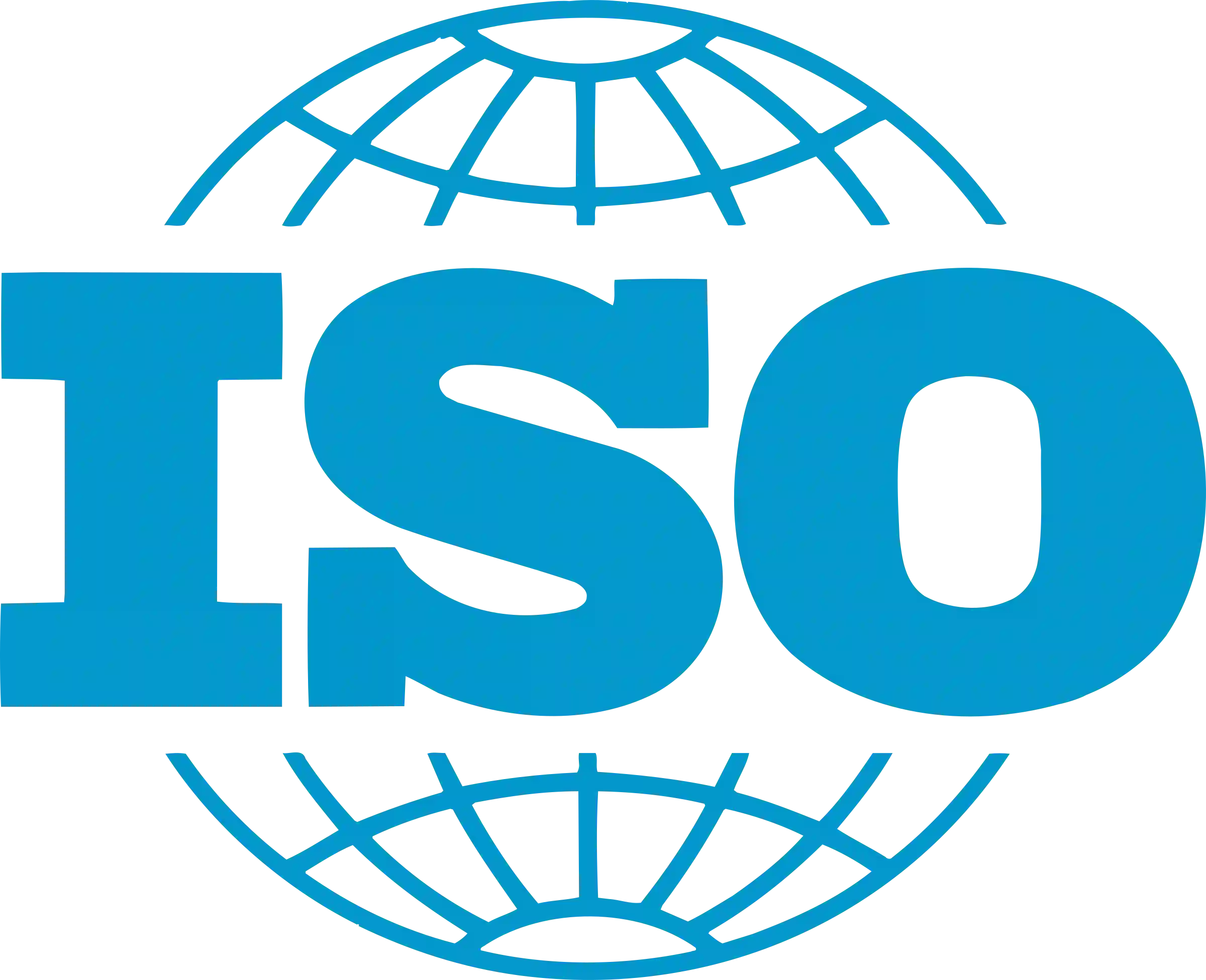
Complementary Therapies for Lung Cancer Patients in the UAE
08 Nov, 2023
 Healthtrip
HealthtripLung cancer is a significant health concern worldwide, and the United Arab Emirates (UAE) is no exception. In recent years, the UAE has made remarkable progress in its healthcare infrastructure, providing advanced medical treatments for lung cancer patients. While conventional treatments such as surgery, chemotherapy, and radiation therapy play a crucial role in managing lung cancer, complementary therapies can offer valuable support in alleviating symptoms and improving the overall quality of life for patients. In this blog, we will explore the use of complementary therapies in the UAE for symptom management in lung cancer patients.
Understanding Lung Cancer and its Symptoms
Before delving into complementary therapies, it's essential to understand lung cancer and its associated symptoms. Lung cancer is characterized by the uncontrolled growth of abnormal cells in the lungs, which can lead to various symptoms. Common symptoms of lung cancer include:
Transform Your Beauty, Boost Your Confidence
Find the right cosmetic procedure for your needs.

We specialize in a wide range of cosmetic procedures

Types of Lung Cancer
Lung cancer is typically categorized into two main types, non-small cell lung cancer (NSCLC) and small cell lung cancer (SCLC).
1. Non-Small Cell Lung Cancer (NSCLC)
NSCLC is the most common type of lung cancer, accounting for approximately 85% of cases. It includes several subtypes such as adenocarcinoma, squamous cell carcinoma, and large cell carcinoma. NSCLC tends to grow more slowly compared to SCLC and is often diagnosed at a later stage.
2. Small Cell Lung Cancer (SCLC)
SCLC is a more aggressive form of lung cancer, accounting for about 15% of cases. It grows rapidly and is often diagnosed at an advanced stage. SCLC is highly responsive to chemotherapy, but it can also be challenging to treat effectively due to its aggressive nature.
Causes and Risk Factors
Understanding the causes and risk factors associated with lung cancer is crucial for early detection and prevention. The primary cause of lung cancer is exposure to carcinogens, with smoking being the leading risk factor. Other causes and risk factors include:
- Tobacco Smoke: Cigarette, cigar, and pipe smoking are the leading causes of lung cancer. Secondhand smoke exposure is also a risk factor.
- Environmental Exposures: Prolonged exposure to radon gas, asbestos, and other environmental carcinogens can increase the risk of lung cancer.
- Family History: A family history of lung cancer may increase an individual's susceptibility to the disease.
- Personal History: Individuals with a prior history of lung cancer or other lung diseases are at an increased risk.
Common Symptoms of Lung Cancer
Lung cancer can present a variety of symptoms, and they often depend on the stage of the disease. Here are some of the most common symptoms associated with lung cancer:
1. Persistent Cough
A chronic cough that doesn't go away or gets worse over time is a common early symptom of lung cancer.
Most popular procedures in India
Total Hip Replacemen
Upto 80% off
90% Rated
Satisfactory

Total Hip Replacemen
Upto 80% off
90% Rated
Satisfactory

Total Hip Replacemen
Upto 80% off
90% Rated
Satisfactory

ANGIOGRAM
Upto 80% off
90% Rated
Satisfactory

ASD Closure
Upto 80% off
90% Rated
Satisfactory

2. Shortness of Breath
Difficulty in breathing or shortness of breath, even during light physical activity, may indicate lung cancer.
3. Chest Pain
Chest pain, often described as a dull, aching sensation, can result from the tumor pressing against the chest wall or other structures.
4. Coughing Up Blood
Coughing up blood or blood-streaked mucus is a concerning symptom that warrants immediate medical attention.
5. Fatigue
Unexplained and persistent fatigue, despite adequate rest, is a common symptom of lung cancer.
6. Weight Loss
Significant and unexplained weight loss can occur as the cancer progresses.
7. Hoarseness
A persistent change in the voice, such as hoarseness, may be linked to lung cancer.
8. Difficulty Swallowing
Lung cancer can sometimes lead to difficulty in swallowing, especially if the tumor affects the esophagus.
9. Bone Pain
Pain in the bones, often in the back or hips, can indicate that the cancer has spread to the bones.
Integrating Complementary Therapies with Conventional Care
Integrating complementary therapies with conventional care is a crucial aspect of providing comprehensive and patient-centered treatment for lung cancer patients in the UAE. While conventional medical treatments target the cancer itself, complementary therapies focus on enhancing the patient's quality of life, managing symptoms, and promoting overall well-being. In this section, we will explore the importance of integrating these therapies and how it can benefit patients.
1. Collaborative Approach
A collaborative approach involving oncologists, complementary therapy practitioners, and the patient is essential for a successful integration of these therapies. Here are some key points to consider:
- Open Communication: Effective communication between healthcare providers and patients is the cornerstone of successful integration. Patients should feel comfortable discussing their preferences and concerns with their healthcare team, including their oncologist, nurse, and complementary therapy practitioners.
- Individualized Care Plans: Each lung cancer patient has unique needs and treatment goals. An individualized care plan should be developed, considering the patient's medical history, current health status, and personal preferences. Complementary therapies can then be tailored to address the specific symptoms and side effects the patient is experiencing.
2. Symptom Management
Complementary therapies can play a crucial role in symptom management for lung cancer patients. By addressing common symptoms such as pain, fatigue, anxiety, and nausea, these therapies enhance the patient's overall well-being. Here's how they can help:
- Pain Management: Therapies like acupuncture and massage can help reduce pain and improve physical comfort. They may be especially valuable for patients experiencing cancer-related pain or discomfort.
- Fatigue Reduction: Mind-body practices like yoga and meditation can help patients manage fatigue and improve their energy levels. These techniques promote relaxation and mental clarity.
- Stress and Anxiety Reduction: Mindfulness, meditation, and aromatherapy can be effective in reducing stress and anxiety, which are often experienced by cancer patients. These therapies promote emotional well-being and resilience.
- Nausea and Digestive Issues: Herbal and traditional medicine, along with dietary guidance, can help manage symptoms such as nausea and digestive problems, improving the patient's nutritional status and comfort.
3. Improved Quality of Life
Integrating complementary therapies with conventional care ultimately aims to enhance the patient's quality of life. By addressing not only the physical symptoms but also the emotional and psychological aspects of living with lung cancer, these therapies contribute to the patient's overall well-being.
- Emotional Support: Mind-body practices, counseling, and support groups can offer emotional support and provide patients with the tools to cope with the challenges of their diagnosis and treatment.
- Holistic Well-being: Complementary therapies take a holistic approach, focusing on the patient as a whole, not just the disease. This approach can empower patients to actively participate in their care and improve their overall well-being.
- Patient-Centered Care: Integrating complementary therapies demonstrates a commitment to patient-centered care, which values the patient's preferences, needs, and comfort. This approach can help patients feel more in control of their treatment and foster a sense of empowerment.
In the UAE, healthcare providers and institutions have recognized the value of integrating complementary therapies with conventional care. Many hospitals and cancer centers have established departments or programs dedicated to complementary and alternative medicine to better serve their patients.
Complementary Therapies in the UAE
The UAE offers a range of complementary therapies that can be integrated into the overall care plan for lung cancer patients. These therapies are used alongside conventional medical treatments, emphasizing a holistic approach to patient care. Here are some notable complementary therapies commonly utilized in the UAE for symptom management in lung cancer patients:
1. Acupuncture
Acupuncture is an ancient Chinese practice that involves the insertion of fine needles into specific points on the body. It is believed to stimulate the body's natural healing processes and can help alleviate pain and reduce stress. In the UAE, skilled acupuncturists work in conjunction with oncologists to address pain and discomfort in lung cancer patients.
2. Massage Therapy
Massage therapy provides relaxation and relief from pain and discomfort. It can also help improve circulation and reduce muscle tension, which may be beneficial for lung cancer patients experiencing physical discomfort and stress. Licensed massage therapists in the UAE are trained to work with cancer patients and adapt their techniques to individual needs.
3. Nutritional Counseling
A well-balanced diet is crucial for cancer patients to maintain their strength and manage side effects of treatment. Nutritional counseling services in the UAE offer personalized guidance on dietary choices and meal plans tailored to the specific needs of lung cancer patients.
4. Mind-Body Practices
Mindfulness, meditation, and yoga are mind-body practices that can help manage the emotional and psychological aspects of living with lung cancer. These practices can reduce anxiety, improve sleep quality, and enhance overall well-being. Many cancer treatment centers in the UAE offer classes and programs focused on mind-body techniques.
5. Herbal and Traditional Medicine
In the UAE, herbal and traditional medicine has a long history, and some patients find comfort and symptom relief through these practices. Traditional herbal remedies and treatments are often used alongside Western medicine to manage symptoms and side effects.
6. Aromatherapy
Aromatherapy involves the use of essential oils to promote relaxation and alleviate symptoms such as nausea and anxiety. In the UAE, trained aromatherapists offer personalized recommendations and treatments to support lung cancer patients.
Conclusion
Lung cancer is a complex disease with different types, causes, and risk factors. Recognizing the common symptoms is crucial for early diagnosis and timely treatment. Early detection can significantly improve the chances of successful treatment and long-term survival. If you or someone you know is experiencing any of these symptoms, it is essential to consult a healthcare professional for a thorough evaluation and diagnosis. In the following sections, we will explore the role of complementary therapies in managing the symptoms and improving the quality of life for lung cancer patients in the UAE
Wellness Treatment
Give yourself the time to relax
Lowest Prices Guaranteed!

Lowest Prices Guaranteed!





